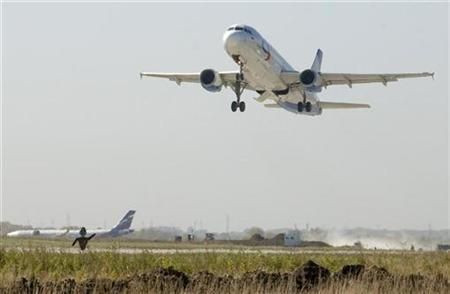Airbus lifts 20-year forecast for aircraft demand, passenger traffic growth

European aircraft-manufacturer Airbus lifted its 20-year forecast for airplane demand and passenger traffic, citing an expected boom in China and India, among other factors.
The company predicted deliveries of nearly 26,000 new passenger and freight aircraft (an increase of 900 from its prior forecast) worth $3.2 trillion between 2010 and 2029.
Out of the 26,000 additional passenger and freighter aircraft needed, about 25,000 will be passenger aircraft valued at over $2.9 trillion, the firm specified. Of these additional passenger aircraft, 10,000 will replace older less eco-efficient aircraft and some 15,000 will be for growth.
The global world passenger fleet will rise to some 29,000 aircraft by 2029, Airbus estimated.
Airbus also forecast average annual growth in passenger traffic of 4.8 percent over the 2010-2029 period (up from the previous 4.7 percent forecast).
Airbus attributed the higher demand primarily to the replacement of older aircraft for newer more eco-efficient models in the mature markets, dynamic growth in new emerging markets, low-cost carriers particularly in Asia, further market liberalization and capacity growth on existing routes.
The forecasts applied to Airbus and well as its rivals like Boeing.
Demand for travel is doubling every 15 years... but in places like India and China we expect to double in the next six years, said John Leahy, Airbus chief operations officer for customers.
Airbus indicated that in terms of passenger traffic volume, domestic U.S. leads the world in total Revenue Passenger Kilometres, followed by domestic China, Intra- European, then US-to-Western European routes.
However, in terms of passenger traffic growth, the emerging economies are leading the recovery.
Domestic Indian traffic growth (at 9.2 percent) is the fastest of any major market and the third fastest growth overall, after traffic between the Middle East and South America, and between North Africa and the People's Republic of China (PRC). Indeed, seven out of the top 20 fastest growth flows connect PRC to the rest of the world.
Airlines in Asia Pacific including China and India will carry one third (33 percent) of the passenger traffic by 2029, making it the largest region, overtaking the US (23 percent) and Europe (23 percent), said Chris Emerson, head of product strategy and market forecast at Airbus.
Leahy also highlighted how the aircraft industry has withstood the global economic downturn,
The recovery is stronger than predicted and reinforces both the resilience of the sector to downturns and that people want and need to fly, he said.
The single aisle sector is particularly strong, and our A320neo meets this future demand by providing our customers with the latest innovations and technologies whilst maintaining maximum commonality. Our entire product range is very well positioned to meet the economic and environmental needs for sustainable growth for the decades ahead.
Airbus is a wholly owned division of European Aeronautic Defence & Space Co. NV.
© Copyright IBTimes 2025. All rights reserved.





















